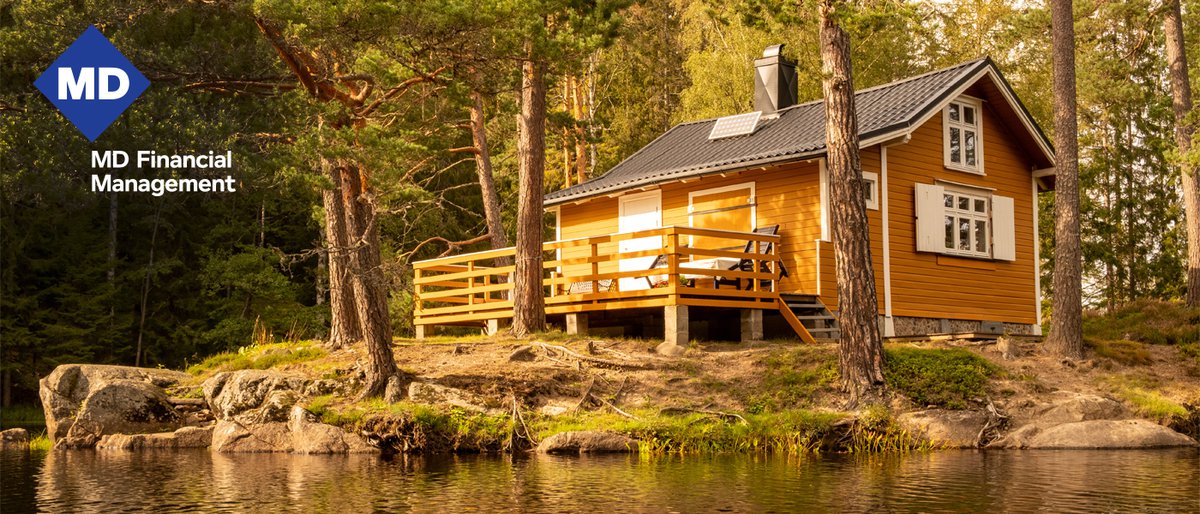Are you one of the lucky people who spent summers with your kids at your family cabin? With all those cherished memories, many parents want to keep their cabin in the family and wonder how best to pass it down to the next generation.
Capital gains tax is a major obstacle when passing down a cabin, especially these days. In 2021, the average cost of a single-family recreational retreat in Alberta rose 31.5%, and it is expected to rise another 9% in 2022.
How capital gains affect your cabin transfer
Real estate is a capital asset, meaning that when you sell it, you have a capital gain or a capital loss, depending on whether the property has increased or decreased in value since you acquired it.
Let’s say you own a cabin that is not designated as your principal residence (more on this below). On your death, you can have the property transferred to your spouse without triggering a disposition (that means the government doesn’t deem you to have sold it, so no tax is payable).
However, if you have no surviving spouse, or your spouse is not inheriting the cabin or does not agree to accept it on a tax rollover basis (that is, deferring the taxes to the first spouse’s death), the cabin is deemed to have been disposed of at fair market value, and the government will expect payment of the taxes owing. If the property has risen in value dramatically, capital gains can sometimes be so high that your heirs have no choice but to sell the property to pay the tax.
For example, let’s say the property’s value increases by $500,000 between when it was purchased and when it is disposed of (either because of your death or because of the sale of the property). Fifty percent of the gross capital gain is taxable, so a person could see their taxable income increase by $250,000 – a sizeable increase that could result in having to sell the property to pay the tax.

How to manage the capital gains tax
Here are a few strategies to cover the impending tax liability upon your death.
Principal residence exemption: If you dispose of a property that’s considered your principal residence, there is no capital gains tax when you sell or when you are deemed to have disposed of the property (assuming it has increased in value). Since you and your family unit (spouse and minor children) can designate one principal residence per year, your cabin (instead of your house) could be considered your principal residence for one, some or all of the years you owned it. If you own more than one property, you should speak to your tax advisor about how to best make use of this exemption.
Tracking capital expenditures: Keeping track of the initial investment (including legal and real estate fees for the transaction) and any capital improvements to the property can help reduce any future capital gain.
The combined amount, known as the adjusted cost base, is used to calculate the capital gain. If you have qualified capital improvement costs to add to your adjusted cost base, the cost base is higher, and the resulting capital gain will be lower. To qualify as a capital improvement, the costs incurred must improve the property’s overall value or useful life. For example, an addition of a deck could qualify, while interior painting generally would not. Keeping good records (i.e., all receipts) is important. If you’re not sure about whether the receipt or improvement counts for this purpose, talk to your tax advisor.
Life insurance: Life insurance is a way to ensure funds are in place and available to cover the taxes owed upon your death. With a permanent life insurance policy in place, your executor or beneficiaries will receive a tax-free death benefit that can be used to help pay the taxes owing and keep your cabin in the family.
Transferring the cabin before you die
One way to reduce the tax liability upon your death is to sell the cabin to your children now. This is a strategy to cap the growing increase in its market value. Since you would be paying the capital gains tax now, your estate wouldn’t have to pay an even higher capital gains tax at your death (assuming the property will rise in value).
Your children may not be able to pay fair market value for the cabin, but they can pay part of the purchase price with a promissory note. This promissory note would not be collected upon. Instead, the amount of the debt can be either forgiven in your will or subtracted from what the children inherit from the estate, since they have effectively received part of their inheritance early. If you have several children and only one buys the cabin, the promissory-note debt can offset that child’s inheritance to equalize the distributions to all of the beneficiaries of your estate.
Plan ahead to keep the cabin in the family
If your goal is to leave this asset to your loved ones, proper planning can help you to ensure they will continue to enjoy your vacation property when you are gone. An MD Advisor* can help determine the best solution for your situation.
* MD Advisor refers to an MD Management Limited Financial Consultant or Investment Advisor (in Quebec), or an MD Private Investment Counsel Portfolio Manager.
MD Financial Management provides financial products and services, the MD Family of Funds and investment counselling services through the MD Group of Companies and Scotia Wealth Insurance Services Inc.
For a detailed list of the MD Group of Companies visit md.ca and visit scotiawealthmanagement.com for more information on Scotia Wealth Insurance Services Inc.
MD Private Investment Counsel offers investment counselling services, delivered by MD Financial Management Inc. MD Financial Management is a proud sponsor of the AMA Youth Run Club.
Banner image credit: Pixabay.com
